For an artist, finding opportunities to show and share their work can be hard. Even rarer are opportunities that put money in the bank. Sacramento artist Uli Smith, however, has found plenty of work as a professional muralist, thanks in part to the thriving creative culture of one of Sacramento’s most treasured neighborhoods.
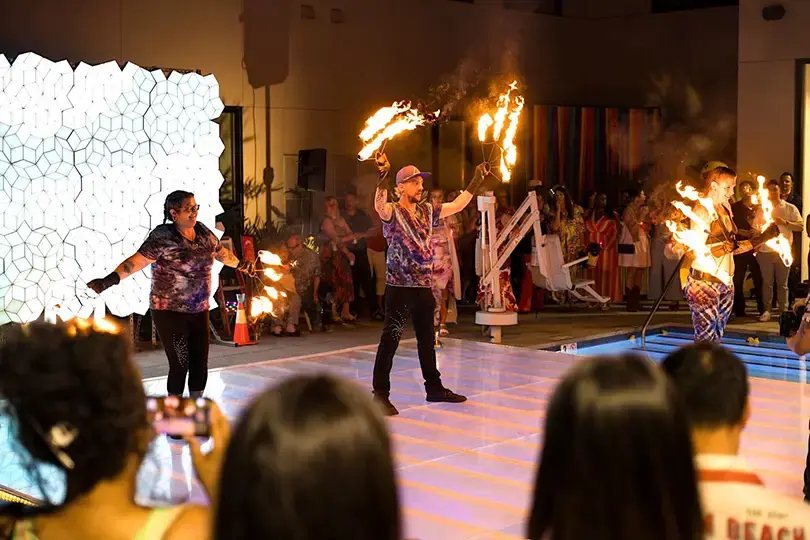
In 2023, Smith was hired by Midtown Association — an owners association for two Property Business Improvement Districts (PBID) and two Restaurant Business Improvement Districts centered in the Sacramento neighborhood — to paint public art for its dog park. The 7-foot-tall concrete sculpture at Truitt Bark Park at the corner of 18th and Q streets, which spells out the word BARK, was Smith’s first time working with the Midtown Association, but it wouldn’t be the last.
At its annual gala and fundraiser, Midtown Love, this May, Smith was awarded “Artist of the Year” by the association. The gala at The Mansion Apartments celebrated Midtown Association’s 40th year in business and raised over $84,000 to support events and services, including Second Saturday, which is perhaps one of the most impactful ways that artists find opportunities in the urban core. With a lit up dance floor over a glowing pool filled with rubber duckies, fire dancing, art and food, the event provided a chance for creatives, business owners and city leaders to rub elbows and engage in the arts.
According to Smith, Midtown Love is another way the association helps artists gain exposure that could lead to future gigs.
According to Smith, Midtown Love is another way the association helps artists gain exposure that could lead to future gigs.
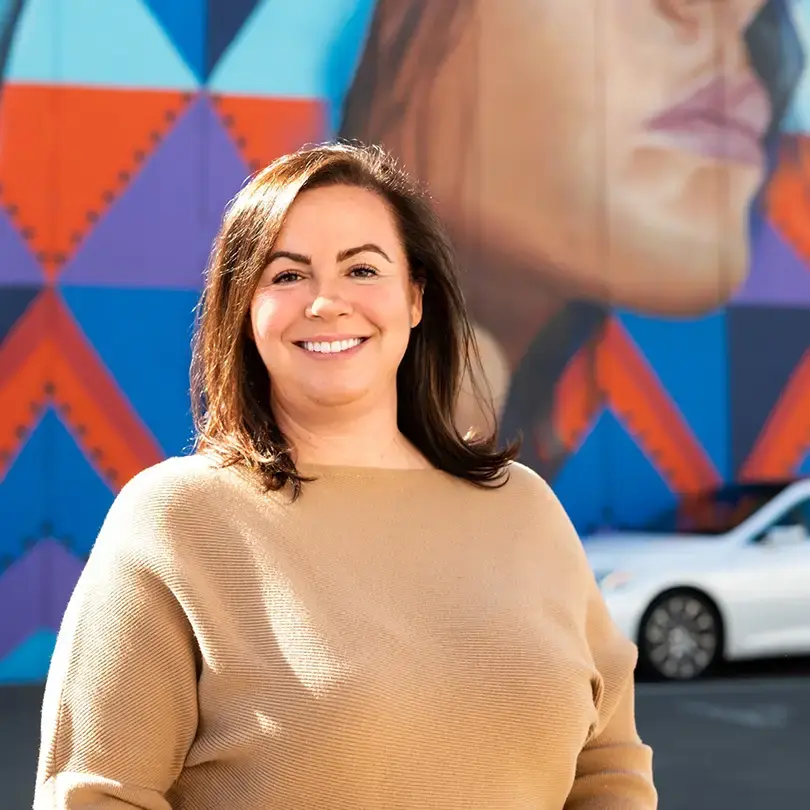
“A lot of the attendees are people that are maybe in decision-making at businesses or organizations in the city, and I think they do a really good job of making sure artists can have opportunities like that to engage with potential clients,” Smith says. Some of those attendees included Sacramento Mayor Kevin McCarty and Megan Van Voorhis, the city’s director of Convention & Cultural Services.
Van Voorhis has worked at the city level to make creative events easier, including streamlining the permitting process so that venues or street festivals require less time and effort to organize. For the city, this leads to a “strong social fabric,” which Van Voorhis believes is crucial to civic engagement and economic progress.
Van Voorhis knows the power of the creative economy, which has an estimated $4.3 trillion in global worth annually and accounts for 6.1% of the global economy, according to UNESCO.
Creative businesses, including art galleries, entertainment venues like Capital Stage and Channel 24, and private studios make up much of the creative economy in Midtown. Thanks in part to Midtown Association’s efforts, Midtown’s creative economy has become more inclusive and provided opportunities for artists and entrepreneurs to thrive.
The association embraces creativity “as a core part of their mission,” and leverages its brand to attract business to the district as a whole, according to Van Voorhis. “I think that’s pretty powerful,” she says.
Van Voorhis has worked at the city level to make creative events easier, including streamlining the permitting process so that venues or street festivals require less time and effort to organize. For the city, this leads to a “strong social fabric,” which Van Voorhis believes is crucial to civic engagement and economic progress.
Van Voorhis knows the power of the creative economy, which has an estimated $4.3 trillion in global worth annually and accounts for 6.1% of the global economy, according to UNESCO.
Creative businesses, including art galleries, entertainment venues like Capital Stage and Channel 24, and private studios make up much of the creative economy in Midtown. Thanks in part to Midtown Association’s efforts, Midtown’s creative economy has become more inclusive and provided opportunities for artists and entrepreneurs to thrive.
The association embraces creativity “as a core part of their mission,” and leverages its brand to attract business to the district as a whole, according to Van Voorhis. “I think that’s pretty powerful,” she says.
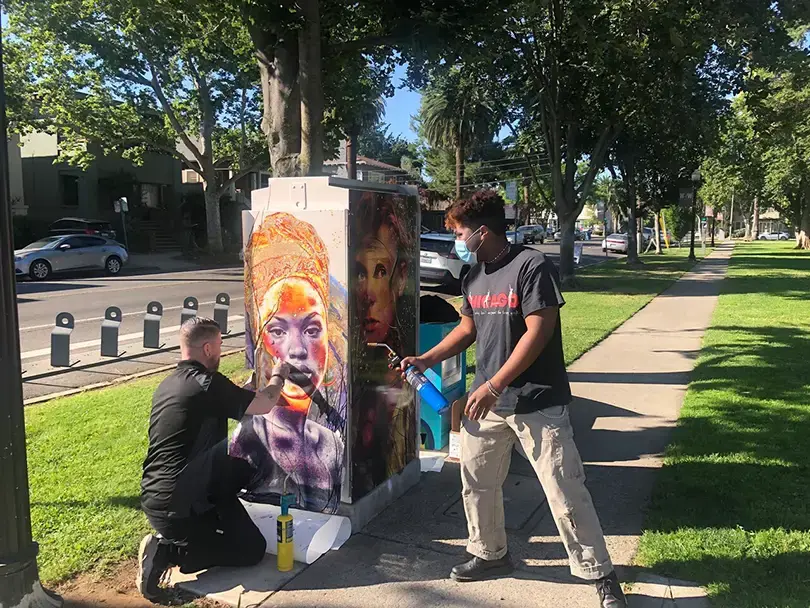
Midtown Association pushes for projects that bring art into public spaces, such as the Truitt Bark Park mural, farmers markets (which feature food vendors, artists, local makers and crafters, and musicians) and monthly Second Saturday art activations, enhancing Midtown’s reputation as a creative hub in the city.
Not all PBIDs take this approach, but for Midtown Association leadership, including board chair Marisa Meredith, it’s deeply embedded into the organization’s philosophy.
“Midtown Association’s leadership, staff and board all believe that in order for all those other businesses to be successful, that the creative economy needs to remain tied to Midtown and successful in and of itself,” Meredith says. Meredith is the senior vice president of her father’s real estate company, SKK Developments, which owns half of the new market-rate residential units built or planned in Midtown over the last five years.
Meredith hopes to continue working toward “growing and evolving an arts and cultural identity” in Midtown, which has been a primary focus since the organization began revamping Second Saturday programming post-COVID. While Second Saturday art walks and gallery openings have been happening throughout the city for decades, Midtown Association has been at the helm of programming in Midtown the last three years, adding street markets, curated art walks, live art demonstrations, collaborations with local businesses and various public events.
Without claiming ownership or control over Second Saturday events, the focus is on “amplifying the existing galleries and artists and ensuring that it spills over into the streets and is really positive,” according to Meredith.
Not all PBIDs take this approach, but for Midtown Association leadership, including board chair Marisa Meredith, it’s deeply embedded into the organization’s philosophy.
“Midtown Association’s leadership, staff and board all believe that in order for all those other businesses to be successful, that the creative economy needs to remain tied to Midtown and successful in and of itself,” Meredith says. Meredith is the senior vice president of her father’s real estate company, SKK Developments, which owns half of the new market-rate residential units built or planned in Midtown over the last five years.
Meredith hopes to continue working toward “growing and evolving an arts and cultural identity” in Midtown, which has been a primary focus since the organization began revamping Second Saturday programming post-COVID. While Second Saturday art walks and gallery openings have been happening throughout the city for decades, Midtown Association has been at the helm of programming in Midtown the last three years, adding street markets, curated art walks, live art demonstrations, collaborations with local businesses and various public events.
Without claiming ownership or control over Second Saturday events, the focus is on “amplifying the existing galleries and artists and ensuring that it spills over into the streets and is really positive,” according to Meredith.
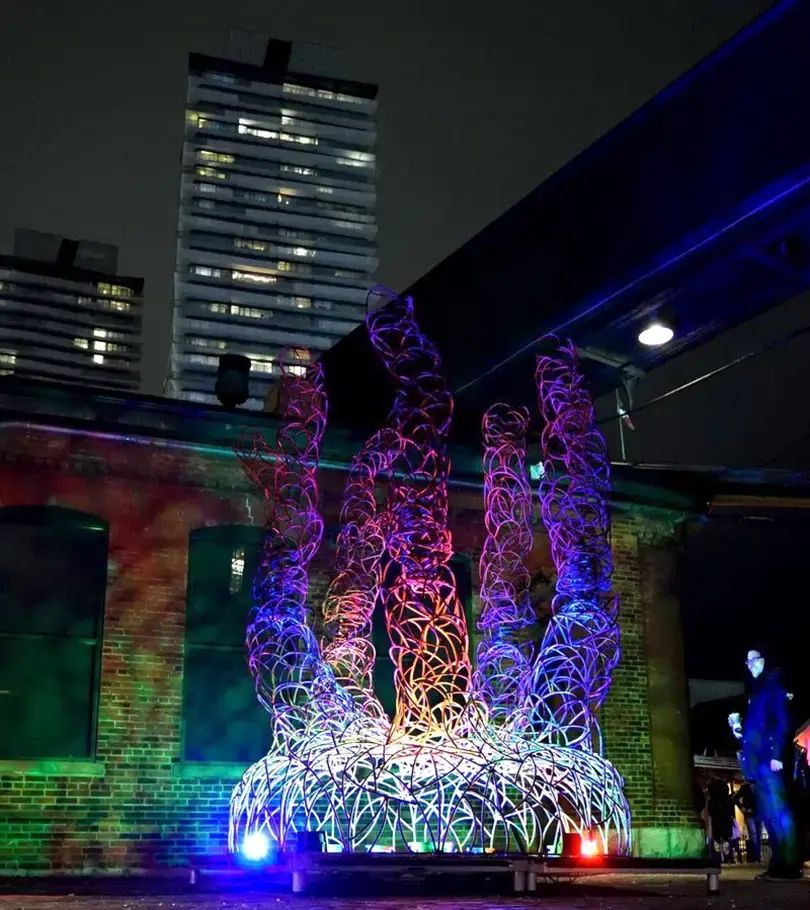
“Art in Unexpected Places,” an ongoing Midtown Association project, is one that emphasizes the creative identity of the neighborhood while also helping to promote “clean and safe” areas — another priority of the association — through beautification of urban spaces with art placed on utility boxes or trash bins. Midtown Parks, the 501(c)(3) arm of Midtown Association, focuses on improving health and increasing community engagement in public spaces and Midtown’s six parks through projects like Smith’s mural, free wifi or night markets.
For Midtown Association Executive Director Emily Baime Michaels, the upcoming “Urban Dreams” public art installation is particularly exciting. Partnering with Sacramento Valley Spark and Visit Sacramento,16 large scale Burning Man Festival sculptures — some from past Burning Man events — will grace Midtown for a month, beginning on Second Saturday, Aug. 9.
Interactive, thought-provoking works by local and regional artists will be placed at various locations throughout the area, and on view through September’s Second Saturday. Some are interactive, kinetic or glow with colorful lights while others show the raw nature of materials like welded metal.
The ultimate goal of all of this work? To be the cultural, culinary and creative epicenter for the Sacramento region. While that may be hard to quantify, the efforts seem to be paying off.
When it comes to cultural tourism, events like Second Saturday that strengthen the brand of Midtown are essential to economic growth. “These events and activities I think are critical. … It really lifts and elevates the neighborhoods where those things are happening.” Van Voorhis says. Data shows that when people attend creative and cultural events, they spend money across the food, retail and hospitality sectors.
For Midtown Association Executive Director Emily Baime Michaels, the upcoming “Urban Dreams” public art installation is particularly exciting. Partnering with Sacramento Valley Spark and Visit Sacramento,16 large scale Burning Man Festival sculptures — some from past Burning Man events — will grace Midtown for a month, beginning on Second Saturday, Aug. 9.
Interactive, thought-provoking works by local and regional artists will be placed at various locations throughout the area, and on view through September’s Second Saturday. Some are interactive, kinetic or glow with colorful lights while others show the raw nature of materials like welded metal.
The ultimate goal of all of this work? To be the cultural, culinary and creative epicenter for the Sacramento region. While that may be hard to quantify, the efforts seem to be paying off.
When it comes to cultural tourism, events like Second Saturday that strengthen the brand of Midtown are essential to economic growth. “These events and activities I think are critical. … It really lifts and elevates the neighborhoods where those things are happening.” Van Voorhis says. Data shows that when people attend creative and cultural events, they spend money across the food, retail and hospitality sectors.
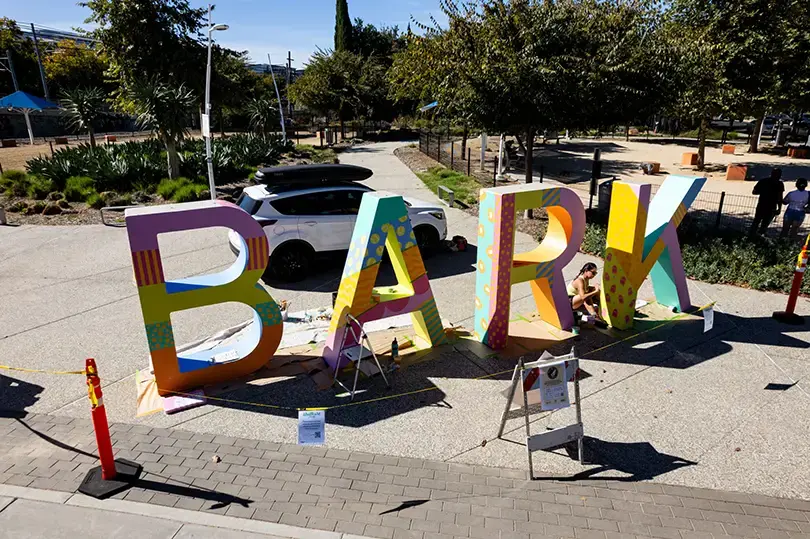
Baime Michaels estimates that the economic impact of Second Saturday in Midtown is $2.5 million for six months of the year; that includes outdoor activations and programming. The year-round farmer’s market features over 300 local businesses, selling their wares and food as well as art.
With hundreds of artists and small businesses that call Midtown home, there is no shortage of real estate business either. Baime Michaels points out that other areas such as downtown have seen a decline in demand for office buildings and other real estate, but Midtown hasn’t.
“What that tells me is that a strong strategy for business retention is to support many small businesses and make sure that their ecosystem is as healthy as possible, and then they’re not as rocked by outside forces like COVID and shifts in the office market,” Baime Michaels says.
While a large part of what the association does is to support its retail businesses, restaurants and encourage property development and housing, for Baime Michaels it’s equally important to emphasize art as an undercurrent to life, “not just this one-time consumable thing.”
The long-term vision, she says, is for artists to be able to make a living off of their art in Sacramento. While it may seem like a pipe dream, paid opportunities for artists to share, show and sell art in Midtown are a good start.
With hundreds of artists and small businesses that call Midtown home, there is no shortage of real estate business either. Baime Michaels points out that other areas such as downtown have seen a decline in demand for office buildings and other real estate, but Midtown hasn’t.
“What that tells me is that a strong strategy for business retention is to support many small businesses and make sure that their ecosystem is as healthy as possible, and then they’re not as rocked by outside forces like COVID and shifts in the office market,” Baime Michaels says.
While a large part of what the association does is to support its retail businesses, restaurants and encourage property development and housing, for Baime Michaels it’s equally important to emphasize art as an undercurrent to life, “not just this one-time consumable thing.”
The long-term vision, she says, is for artists to be able to make a living off of their art in Sacramento. While it may seem like a pipe dream, paid opportunities for artists to share, show and sell art in Midtown are a good start.
This story is part of the Solving Sacramento journalism collaborative. This story was funded by the City of Sacramento’s Arts and Creative Economy Journalism Grant to Solving Sacramento. Following our journalism code of ethics, the city had no editorial influence over this story. Our partners include California Groundbreakers, Capital Public Radio, Hmong Daily News, Outword, Russian America Media, Sacramento Business Journal, Sacramento News & Review and Sacramento Observer. Sign up for our “Sac Art Pulse” newsletter here.





